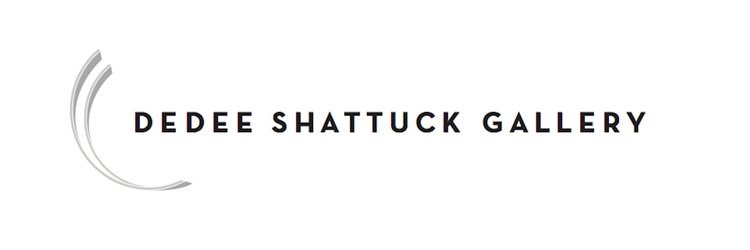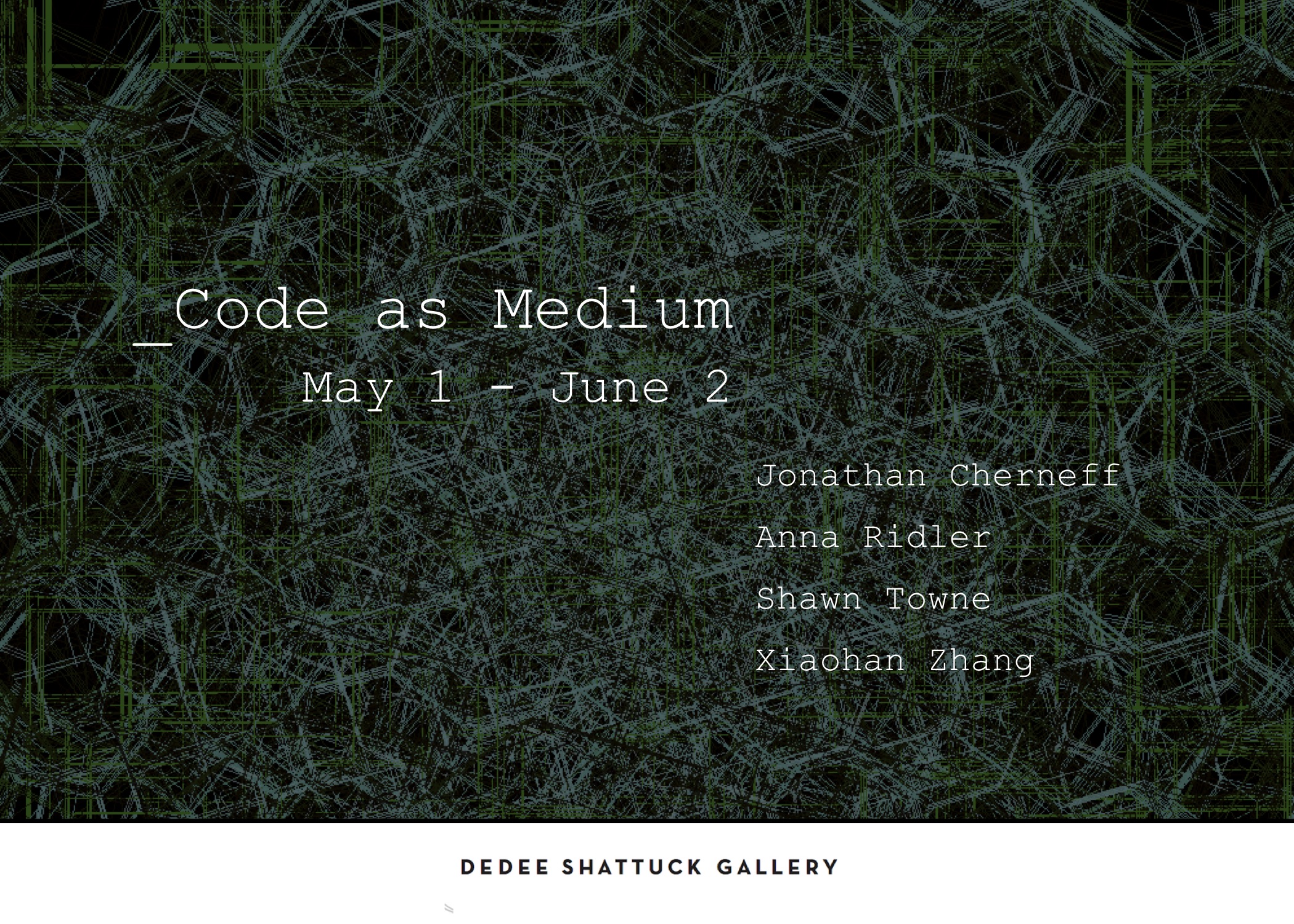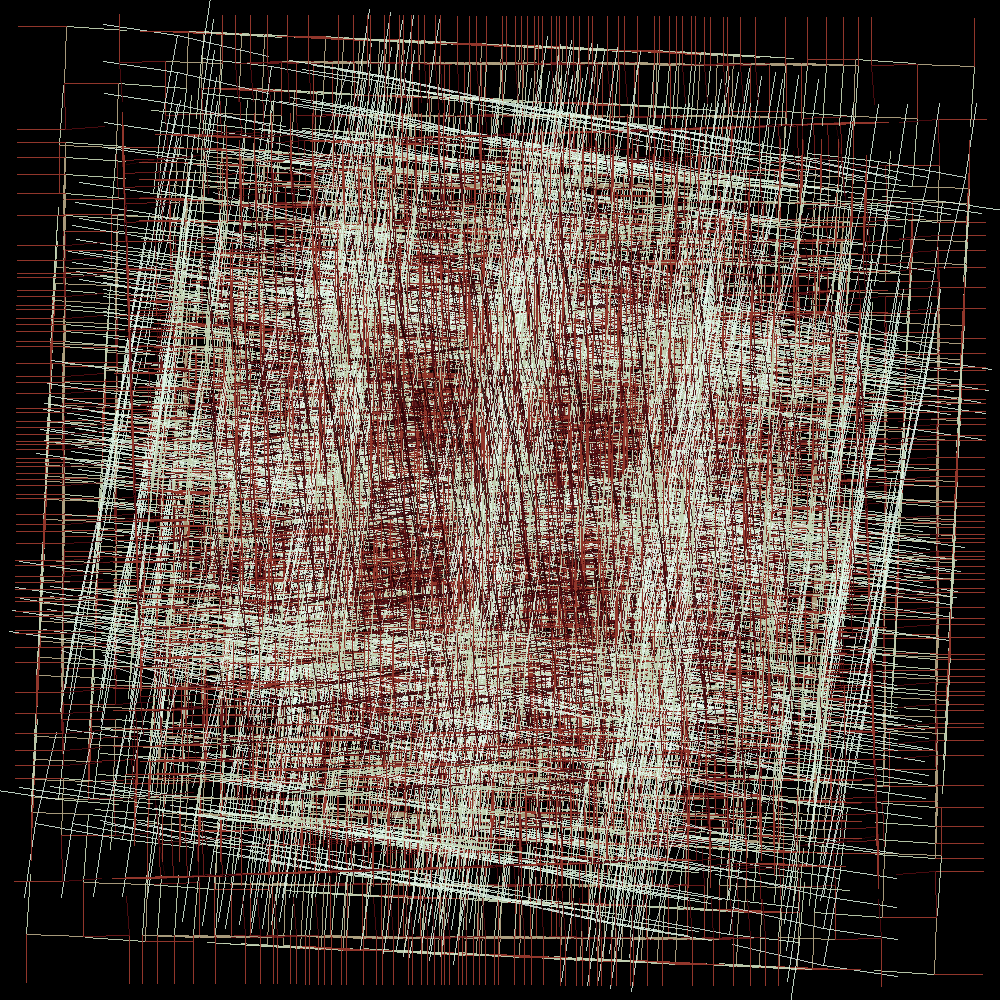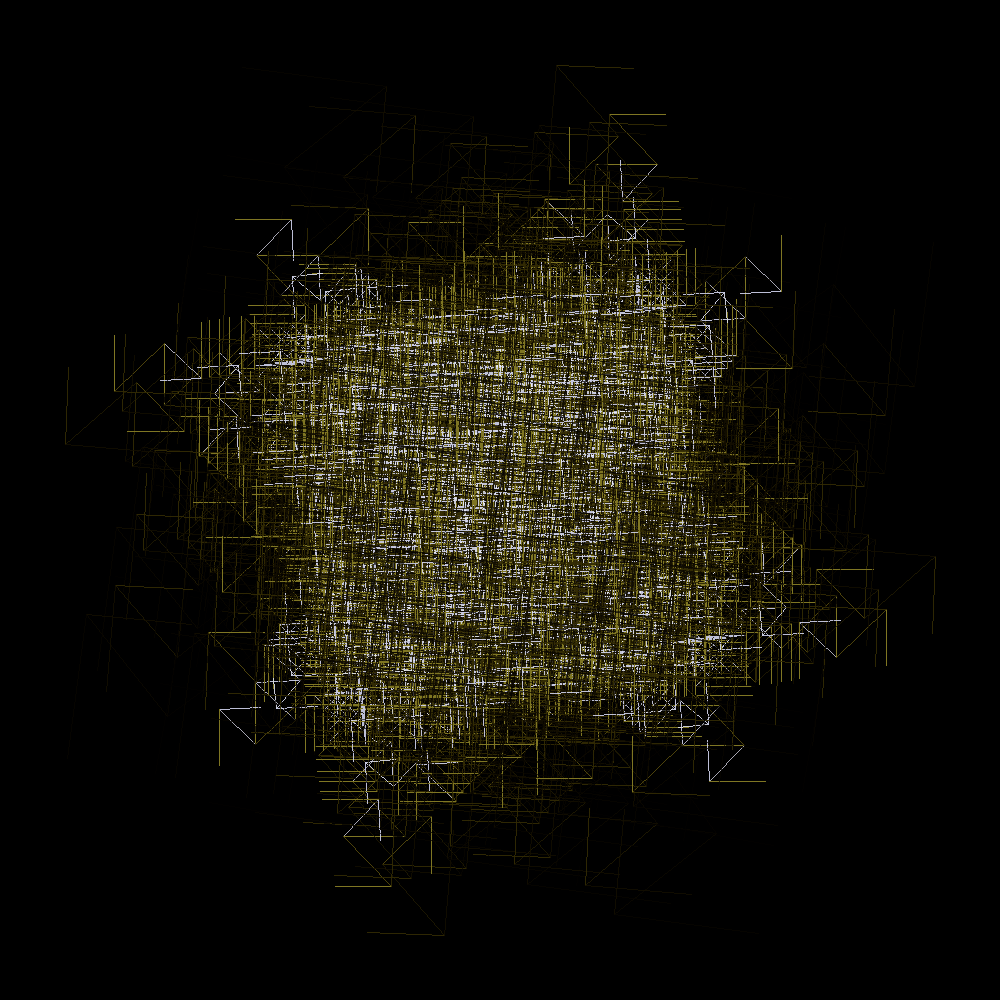Co-Curated by Nick Zimmermann
Opening Reception
Saturday May 4, 5-7pm
To some, art derived from digital media may conjure the automated, rigid, and impersonal, devoid of expression or depth – but the work of the artists presented here demonstrate that the opposite is true. Dynamic and unpredictable, in many ways the code-driven work shown has more in common with organic systems than traditional art media. In the age of data, algorithms digest and transform information in surprising ways. GANs (Generative Adversarial Networks) and other machine learning systems are “trained” on data that comes from us. As a result, the compelling and often bizarre forms they conjure have much of us in them. The outputs of generative work are different with each iteration, yet they maintain a strong fingerprint of the artist in how they are coded, trained, and rendered.
Anna Ridler trains neural networks on carefully curated inputs which feed back on themselves, iteratively transforming both the GANs processed output and her own handmade source material in the process. Xiaohan Zhang programs sublime abstractions of light, space, and velocity, which respond dynamically to viewer interaction in complex and subtle ways. Jonathan Cherneff’s generative drawings shuffle thousands of lines into crystalline compositions that are more than the sum of their parts, and virtually never repeat. Shawn Towne’s kaleidoscopic compositions appear as organic expansions of light.
If technology represents an ability to engineer the physical world with control and precision, these works invert that attitude and celebrate the surreal, unanticipated, and elusive. But their content is not random or arbitrary -- built from lines of code, each piece is forged in a medium that is intrinsically deliberate. In that in-between space, the artists strike a balance between Boolean logic and organic drift.
Jonathan Cherneff
ARTIST STATEMENT
The machine implements a drawing language capable of expressing thousands of billions of potential drawings. It explores this language, choosing where to go and realizing each potential drawing along the way. Approximately 10 drawings per second are computed on the fly, with 32,000 lines each, and likely never to be seen again.
My motivation was threefold:
1. To create a system that would exceed what was programmed or even anticipated
2. To make live computation as a medium
3. To create something amusing, interesting, or beautiful.
BIOGRAPHY
Jonathan received a PhD from, and taught at, the Intelligent Engineering Systems Laboratory at MIT. His research involved applications of Artificial Intelligence to image and drawing interpretation, construction schedule generation from CAD, and systems for collaborative design.
His professional work has involved developing AI applications for supply chain, schedule optimization, and collaborative design for companies such as General Motors, Ford, GE, Case, Bosch. He has also consulted for many years designing and implementing systems for real-time data analysis, systems integration, thermal modelling, work allocation, and collaborative scheduling. He holds several patents for innovative algorithm design. In the eighties, he installed solar energy and built houses.
ARTIST STATEMENT
Producing an image using machine learning, as opposed to any other method, creates different experiences, expectations, histories, traces and contexts for the viewer to consider. I am interested in the form these associations may take and how they might be registered. I have used machine learning here as a process that enables me to accentuate the central ideas that emerged out of The Fall of the House of Usher, a 12-minute animation based on Watson and Webber’s 1928 silent film. Each still is created by a neural net which has been trained on ink drawings that I have made. Three separate neural nets are used – the first trained on drawings of the original frames, the second on drawings made of the results of the first net, and the third on drawings made of the results of the second. By manipulating the reciprocity and feedback between the original film, my drawing and this form of technology, I have been able to heighten and intensify the film’s original motifs and to liberate fugitive aspects of memory to create a sense of the uncanny that is partly machine-made.
Working in this way, I am not interested in programming a machine to draw like a human or in producing a drawing that does not acknowledge its origin. The shiny, robotic quality of much digital art appears to neuter the messiness of the world, I am interested, however, in the opposite approach: how to use a medium that is cold, sterile and algorithmic to maintain and accentuate a sense of human touch. By laboriously creating by hand datasets based on the original film and then by processing and reproducing these by using specially modified algorithms, I have created a system of loops and feedbacks that use and enhance machine learning as an integral part of the work’s material and process. The simultaneous progression from hand drawn still, to its first feedback, to its ‘final’ form is registered in the The Fall of the House of Usher’s three contiguous projected screens.
BIOGRAPHY
Anna Ridler is an artist and researcher who lives and works in London. She has degrees from the Royal College of Art, Oxford University, University of Arts London and have shown at a variety of cultural institutions and galleries including Ars Electronica, Sheffield Documentary Festival, Leverhulme Centre for Future Intelligence, Tate Modern and the V&A. She is a recipient of the 2018 European Media Art Program and the winner of the 2018-2019 Dare Art Prize. She has been commissioned by Opera North, Live Cinema UK and Impakt Festival to create works. She is interested in working with collections of information or data, particularly self-generated data sets, to create new and unusual narratives in a variety of mediums, and how new technologies, such as machine learning, can be used to translate them to an audience. She is currently working with and researching the creative potential of machine learning, and how it relates to drawing and painting.
ARTIST STATEMENT
I am one in a long line of artists who utilizes new technologies in order to understand the functions and movements of naturally occurring phenomena through the fusion of visual imagery and musical composition. Applying this process to concepts surrounding repetition, randomness and remembrance, I create computer-generated abstractions - nonfigurative video animations - that explore the synchronous and asynchronous formations of rhythmic and arhythmic time. These works depict relationships between image, sound and motion. I then use camera movement (panning, zooming and rotation) to affect the visuals. The end results are digitally altered representations of naturally occurring phenomena found within my environment.
BIOGRAPHY
Shawn Towne is a designer and digital media artist. His work has been exhibited both nationally and internationally, including AXIOM Gallery(Boston), Fuller Museum of Art (Brockton), LiveBox (Chicago), California State Polytechnic University: Kellogg Art Gallery (Pomona), Victory Media Network (Dallas), C2C Gallery (Prague), VideoChannel (Cologne), among others. Towne studied at the College of Visual and Performing Arts at the University of Massachusetts Dartmouth and possesses a BFA in Graphic Design / Letterform and a BFA in Electronic Imaging / Photography. Towne received his MFA in Visual Arts with a focus on video art and interactive media from the Art Institute of Boston at Lesley University. Currently he works as a practicing designer, and video artist. He also holds an academic appointment of Associate Professor of Digital Media within the Design Department of the College of Visual and Performing Arts of the University of Massachusetts Dartmouth. His educational pursuits maintain an emphasis on emerging technologies, interactivity, design, video and motion graphics.
Xiaohan Zhang
ARTIST STATEMENT
My interest in generative art grew from my sense of adventure and discovery in nature. My family would go on weekend trips to national parks, hiking and camping -- I would inevitably go off the trail, climbing rocks and jumping over unmarked streams, in an attempt to discover what True, Uncurated Nature was. I didn't want a standard experience. I wanted the real thing.
Ironically, I found the real thing in programming virtual worlds. How are mountains formed? What would happen if gravity behaved differently? How do infinitely recursive shapes even exist? By allowing you to test and model ideas in minutes, programming is the ultimate tool for discovery. It's taking a trip to other worlds, then coming back and seeing your own world with new eyes.
BIOGRAPHY
I am a new media artist in the San Francisco Bay Area, interested in discovering and sharing the beauty of mathematics and physics. Topics of interest include real time interactive art, emergent systems, generative design, self organization, and physical simulations. I also care about UI, teaching, contributing to the broader creative code community, music, and video games.














